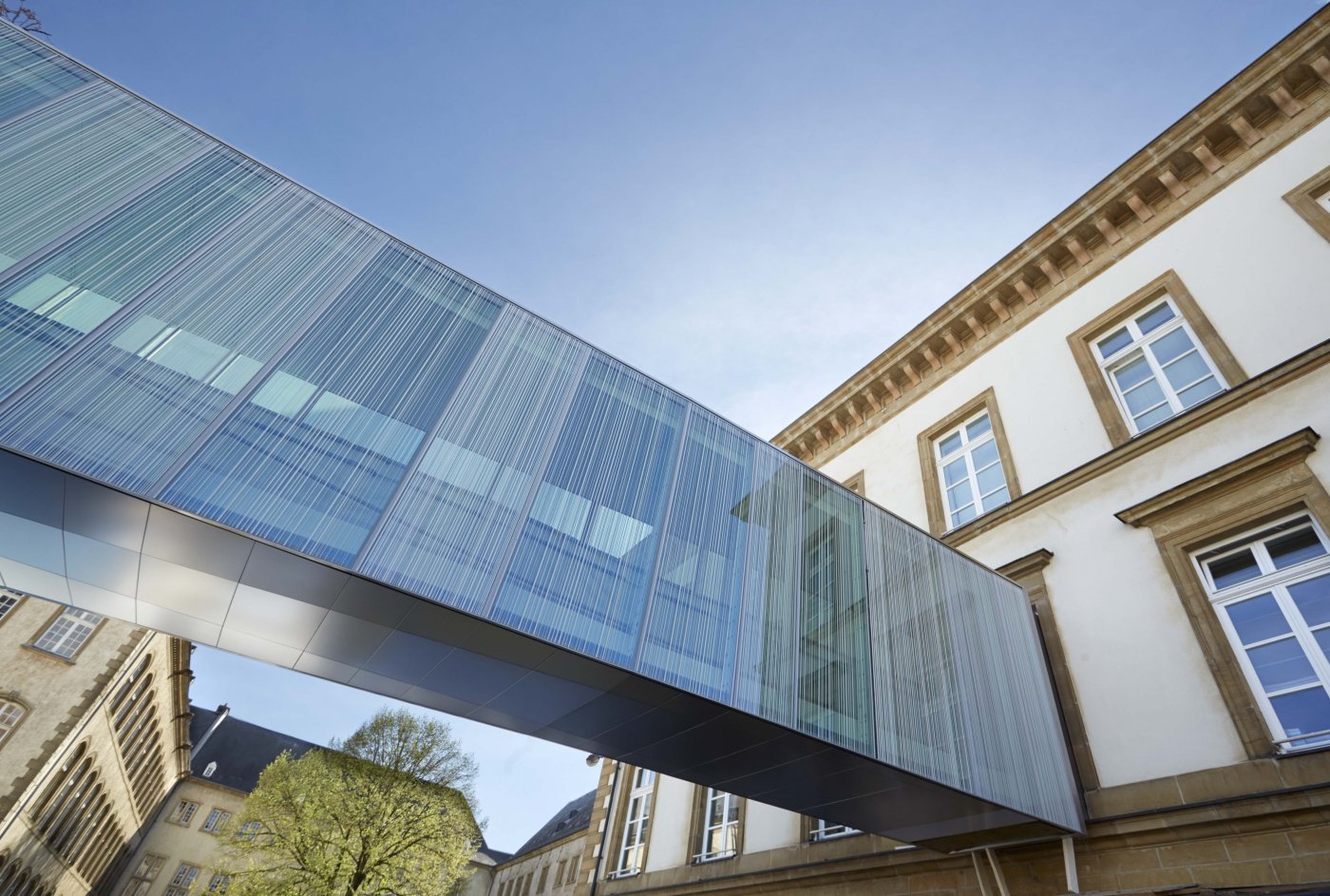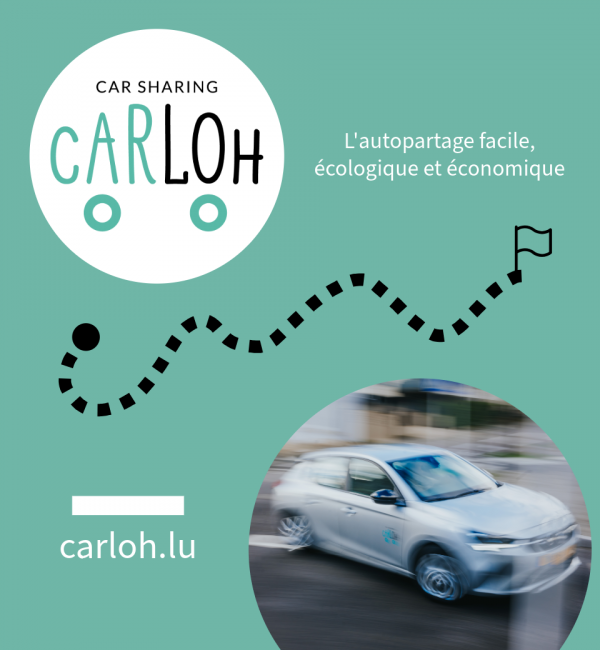Summary record
Video
Coffee-Bike
QUESTION BY ROY REDING
Council member Reding would like to know more about the Coffee-Bike monthly fee. As the amount had been set at €750 per month, he believes it is too expensive for a small business.
This statement leads him to ask the following questions:
- How was the pricing determined?
- Do you believe that this amount is appropriate for a small business that must work with smaller profit margins?
- Don't you think that amore moderate rate could increase the offering of these mobile businesses, as is the case in other capital cities?
RESPONSE BY SERGE WILMES
Alderman Wilmes emphasised that the College of Aldermen had set guidelines for the operation of food trucks and similar businesses. In this context, public locations needed to be defined and a fee set based on the surface area and the location. With regard to mobile businesses, the City of Luxembourg took inspiration from other cities such as Brussels, in particular.
On the City's website, a fee schedule is published and there is a link for interested parties to apply. For example, at Place Guillaume II the price is €1.6 per hour and per m2, and around Charly's Gare it is €0.8.
One must also bear in mind that traditional businesses often pay very high rents.
With regard to the Coffee-Bike in particular, an interview was conducted between the operator and their lawyer and the representatives of the College of Aldermen. Further to that interview, the City of Luxembourg proposed to enter into an agreement that listed the locations where the Coffee-Bike would be allowed to operate. These locations were chosen so they would not be located in the immediate vicinity of businesses that have a similar offering.
The City also proposed that the operator record on a time sheet the actual amount of time spent at different locations, and that the time sheet be used to calculate the total number of hours at the end of each month. However, the City has not yet heard back from the other party.
Generally speaking, the City supports this type of mobile business, and the College of Aldermen is inclined to review the conditions, if necessary, in the interest of commerce.
Parking plan for people with reduced mobility in Gasperich
QUESTION BY MAURICE BAUER
At the recent meeting of the Gasperich Syndicat d'intérêts locaux (local interests union), several complaints were addressed in connection with the parking needs of people with reduced mobility.
In Gasperich, the members of the local division of the Amicale des personnes retraitées âgées et solitaires (association for retired seniors living on their own - AMERIPAS) often encounter problems finding parking places next to their meeting room provided by the City of Luxembourg at 8, Place Sauerwiss. The car park next to the meeting room is regularly encumbered by vans which, due to their size, make it difficult for persons with reduced mobility to get out of their cars.
Would it be possible to create a parking place for people with reduced mobility next to the meeting room of the local division of AMERIPAS in Gasperich to facilitate access for the persons concerned?
Likewise, it would be a good idea to create a parking place for people with reduced mobility in the centre of Gasperich, near businesses in the place known as bei der Auer. In 2017, two parking places for electric vehicles were created in this area, making the access to businesses more difficult, especially for people with reduced mobility.
RESPONSE BY PATRICK GOLDSCHMIDT
Alderman Goldschmidt pointed out that if a private individual needs a parking place for a person with reduced mobility then they should make a formal request. After a consultation procedure, it is the Service Circulation (Traffic Department) that is responsible for creating such parking places. The procedure would be the same in this case. Accordingly, after consultation, the Service Circulation will create a place in each the two specified locations to take into account the needs of the district.
Relocation of the Hariko project
QUESTION BY CLAUDIE REYLAND
Considering the importance and success of the work carried out at the Hariko workshop with young – and not-so-young – refugees and non-refugees in areas such as:
- raising awareness of local community values among persons from cultures with other attitudes towards issues such as gender equality, homosexuality, etc.;
- integration through sporting activities (football, jogging, swimming classes, etc.);
- integration through cultural activities (dance, theatre, sewing classes, etc.);
- the organisation of language classes (French, English, Arabic, etc.);
- the organisation of IT classes;
- assistance with administrative and legal issues during the complicated formalities that applicants for international protection must complete;
- collaboration with "OH" (Oppend Haus), which places refugees in family homes (allowing them to leave the refugee centres).
Given the importance of having Hariko located in the City of Luxembourg (and not in another nearby municipality that is more difficult to access), and in light of the fact that Hariko will have to leave its premises located at 1, Dernier Sol, in Bonnevoie, by the end of June this year, i.e. in two months, I submit the following questions to the College of Aldermen:
- Does the City of Luxembourg plan to make other premises available to Hariko at the end of June?
- If not, does the College of Aldermen think that Hariko should stay in the city? And if it does, what steps has the College of Aldermen taken to find an adequate solution to this emergency situation?
- Considering that Hariko's teams are currently working with little financial support and the limited means at their disposal, how does the City of Luxembourg plan to support the initiative so that it can build on its success and fully develop its potential?
- According to an article in the Tageblatt newspaper, is it true that Hariko will be relocated to Esch-sur-Alzette?
RESPONSE BY LYDIE POLFER
The Mayor declares that the Hariko project, launched in September 2015, was supported by the Red Cross, which paid the rent for the premises it occupied. However, at the beginning of 2018, the owners of the building announced that they needed the building for their own use. On 9 May, the Mayor, accompanied by Alderwoman Wiseler, visited the premises in question and determined that the owners of the building did indeed wish to use it for a project of their own. The fact remains, though, that the project will not get off the ground any time in the near future since it entails the merging of seven different parcels, and this must first be approved by a vote of the Municipal Council. Therefore, before any construction work can begin, steps must also be taken to clarify what must be sold for the public right-of-way. Consequently, a new meeting with the owners was planned for 5 July in order to explain to them the procedure to follow.
The managers of Hariko made an announcement suggesting that the City of Esch-sur-Alzette had offered to host Hariko in the former building of the Magistrate's Court (Justice de Paix). The College of Aldermen wishes to point out that it supports this project, and that prior to its completion, Hariko could be temporarily accommodated in two houses in Esch. Thereafter, it would be laudable for Hariko to also have a base in a large city in the south of the country.
Currently, the City does not have any buildings that can be made available to Hariko in the short term. However, on 12 June, a visit was made to the building that housed the former police station in Rue Glesener, in the company of representatives of the Red Cross. The City had initially planned to allow start-up companies to use these premises, which had to be renovated. But the top floor of the building – which is not accessible by lift – could be a possible solution. Electricity still needs to be reinstalled, as well as heating, windows, etc. The premises of the former abattoir in Hollerich could be an alternative solution, after they have been vacated by the Service Sports (Sports Department).
In that regard, plans have already been made to consult the residents of Hollerich, when the time comes, to find out how they would like to site to be developed. Finally, even ifthe City of Esch-sur-Alzette is able to provide Hariko with suitable premises, that would not prevent the City from continuing to seek an appropriate solution within its own territory.
Traffic in Rue Schetzel and Rue des Sources
QUESTION BY SAM TANSON
The residents of Weimerskirch, and in particular those of Rue Schetzel and Rue des Sources, have formed an association to draw attention to the issues of transit traffic in their streets and violations of the traffic code (Code de la route).
In October 2017, at a meeting held at City Hall, it was decided that the Service Circulation would assess the situation and try to come up with a solution. The possibility of one-way streets and/or the narrowing of the road in various locations was discussed as solutions for reducing traffic speed. It was agreed that a participatory meeting would be organised with the local residents in order to discuss various possibilities.
Protecting the pavement along Rue de Kirchberg, between Rue Schetzel and Rue des Sources, was also discussed since drivers regularly use the pavement to overtake vehicles on the right. As work has been planned in this location, along Rue Schetzel, it had been mentioned that measures could be taken while work was already being carried out.
I would now like to ask the College of Aldermen the following questions:
- What solutions has the Service Circulation come up with?
- Are there plans for a meeting with the local residents, and if so, when?
- Have any measures for protecting the pavement been implemented, or are there plans to implement such measures any time soon?
RESPONSE BY PATRICK GOLDSCHMIDT
Alderman Goldschmidt pointed out that the College of Aldermen had met with the residents of the streets concerned in 2017. At that time, a decision was taken to count the vehicles and investigate the possibility of implementing one-way traffic or narrowing the road, bearing in mind that the roads would still have to accommodate bus traffic. According to the counts in question, 130 vehicles travelled along Rue des Sources between 8:00 and 9:00, and 220 vehicles between 18:00 and 19:00. In the streets with a 30 km/h speed limit, traffic is prohibited, except for local residents and visitors. Unfortunately, even thoughthe police regularly monitors compliance with this regulation, that did not prevent a certain amount of through traffic.
In light of this, ifone-way traffic were to be established on the 800-metre section of road, it should be expected that traffic speed would increase. Moreover, to introduce one-way traffic with bus lanes, the street must be 2 x 3 meters wide, with a 2 meter wide traffic lane, i.e. an overall width of 8 meters, which is not available, unless the parking lane is removed, which the local residents are hardly likely to approve.
It was therefore decided that the current situation should be maintained, but the possibility of raising the edges of the pavement to prevent the passage of vehicles was examined with the Service Voirie (Roads department). However, as there are no other solutions in view at the moment, there are no plans to meet with the local residents at this time.
Finally, in the long term, to prevent such situations from occurring, it would be advisable to heighten public awareness so that cars are occupied by more than one passenger, or that greater use is made of public transport.
Flooding in Pfaffenthal
QUESTION BY CARLO BACK
In its edition of Wednesday, 13 May 2018, rtl.lu described the flooding in the Pfaffenthal district after several weeks of torrential rainfall. According to the report, household wastewater had found its way into the rainwater drainage system. According to the same source, the Pfaffenthal district has a sewerage system that separates rainwater from household wastewater.
In light of the preceding, I would like to ask the following question:
- What can the College of Aldermen tell us about the unusual events that occurred in the district's sewerage system?
- What are the reasons for these unusual events?
- What does the City plan to do to prevent unusual events of this type from occurring again in the future?
RESPONSE BY SIMONE BEISSEL
Alderwoman Beissel replied that, during the night of 31 May to 1 June, there had been an enormous amount of rainfall, up to 80 litres/m2, whereas between 25 and 30 litres/m2 per hour is usually considered as a heavy spell of rain. Ms Beissel visited the location twice, accompanied by the Mayor.
The primary drain operates as a mixed system, collecting household wastewater and rainwater in the same line. It was also observed that many private connections are defective, which contributes to causing the drain to overflow. The water is discharged into the Alzette, and since it is narrow in that location, it quickly overflowed its banks, flooding the streets and cellars.
Analyses were conducted to determine the origin of the inflows that made the drain overflow, and there are plans to install a bypass to prevent the Alzette from overflowing. The whole sector will be examined in detail to determine what additional measures can be taken.
During the infrastructure renewal work, the water drains will be enlarged to the extent possible.
















